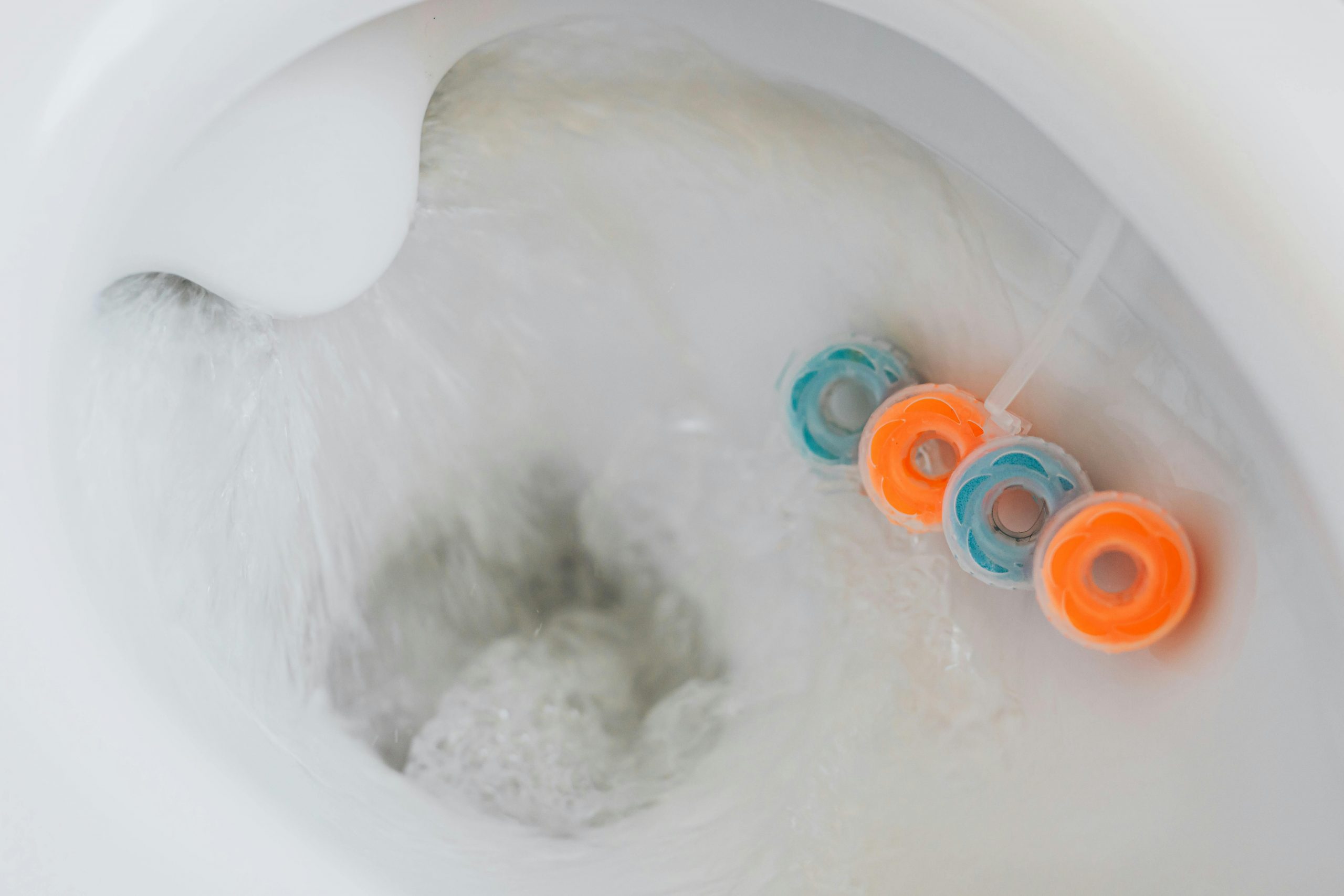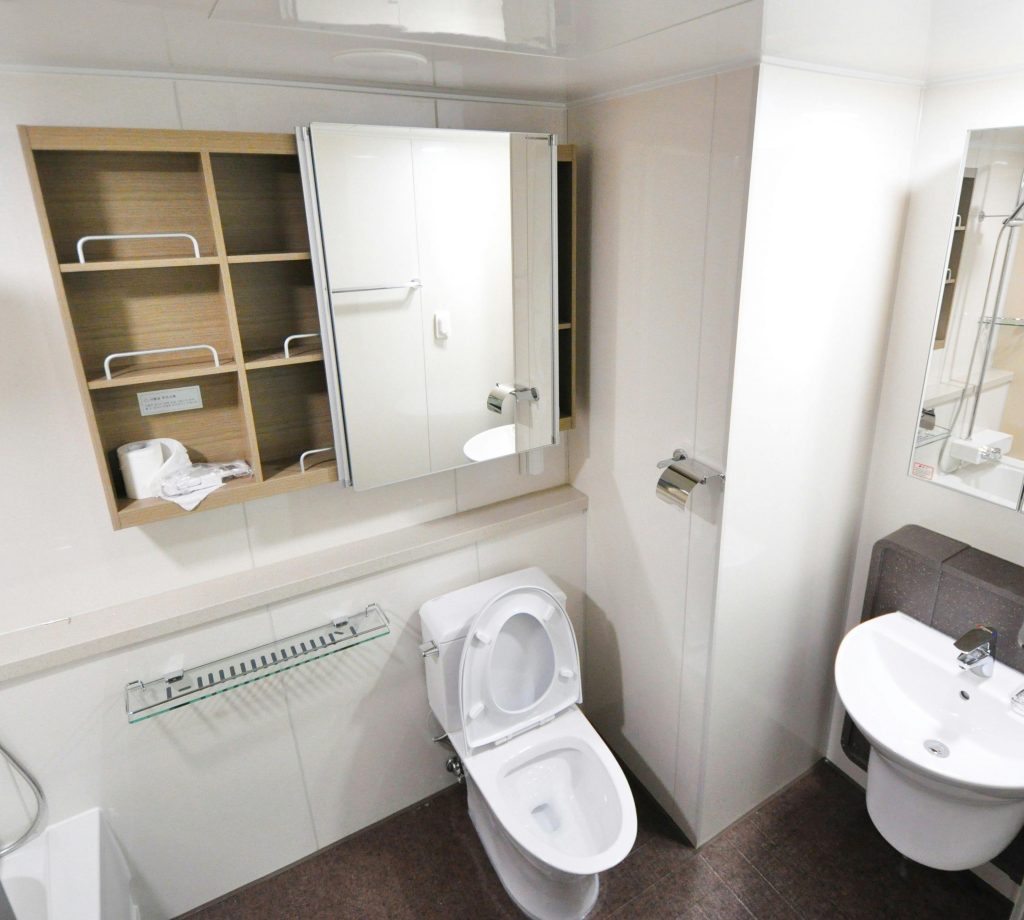- A whistling toilet is usually caused by a worn fill valve, old ballcock valve, sediment buildup, or high water pressure.
- While not always urgent, a whistling toilet should not be ignored—it can lead to wasted water, higher bills, and potential leaks.
- If the whistle happens right after flushing, the fill valve is likely the problem and may need replacement.
- Random or nighttime whistling often points to a leaking flapper or fluctuating water pressure in your plumbing system.
- Common fixes include replacing the fill valve, swapping out the flapper, cleaning out sediment, or adjusting water pressure.
- Most whistling toilet problems can be solved with DIY repairs under $25, though persistent noise may require a plumber.
- Prevent future whistling by inspecting toilet parts regularly, monitoring water pressure, and keeping hard water sediment under control.
If you’ve ever walked into your bathroom and wondered, “why is my toilet whistling?” you’re not alone. Toilets can make all kinds of strange noises—hissing, banging, gurgling—but a high-pitched whistle is one of the most common. The good news? A whistling toilet is usually a sign of a plumbing issue that can be fixed with some simple troubleshooting.
In this guide, we’ll break down why toilets whistle, which plumbing parts are usually to blame, and how you can stop the noise for good—whether you’re into DIY fixes or calling in a pro.
Why Your Toilet Is Whistling
The whistling sound typically comes from water moving through a faulty or worn-out part in the toilet tank. When plumbing parts start to wear down, loosen, or clog with sediment, water flow gets disrupted, creating vibration and that annoying whistle.
The most common culprits include:
- Worn fill valve – The fill valve controls water flow into the tank. When it wears out, it can vibrate and create a whistle.
- Old ballcock valve – Many older toilets use this valve, which tends to whistle loudly as it ages.
- Water pressure issues – High water pressure can force water through valves too quickly, producing a whistle.
- Sediment buildup – Mineral deposits can block smooth water flow, causing noise.
Is a Whistling Toilet a Serious Plumbing Problem?
Not always, but it shouldn’t be ignored. A toilet making noise isn’t just an annoyance—it often signals something in your plumbing system that needs attention. While a whistling toilet usually won’t flood your home, it can point to:
- Wasted water and higher bills.
- Stress on aging plumbing parts.
- Potential leaks down the line
Think of the whistle as your toilet’s way of asking for a tune-up. Fixing it early usually means a cheap, simple repair instead of a costly plumbing service later.
Why Is My Toilet Whistling When I Flush?

If the sound happens right after flushing, your fill valve is almost certainly the problem. When the tank refills, water rushes through the valve. If the valve is loose, clogged, or deteriorating, it starts to vibrate. That vibration is what creates the whistle.
The fix often involves either adjusting or replacing the fill valve. Fortunately, modern replacement valves are inexpensive and designed for quieter operation.
Why Is My Toilet Whistling at Night?
Many homeowners notice the noise at night when the house is quiet. In some cases, toilets even whistle without being flushed recently. This could mean:
- Slow leak from the flapper – A worn flapper lets small amounts of water leak into the bowl, triggering the fill valve to turn on randomly.
- Water pressure changes – Municipal water systems often fluctuate at night, making the toilet whistle when pressure is high.
If your toilet whistles in the middle of the night, it’s worth checking both the flapper and your home’s water pressure.
How Do I Stop My Toilet From Whistling?
Stopping a whistling toilet usually depends on identifying the root cause. The most common issues are worn or clogged parts in the fill valve, a faulty flapper, or water pressure problems. Here’s a detailed guide to addressing each:
1. Replace or Repair the Fill Valve
A whistling toilet often points to a problem with the fill valve, especially the valve seal. To fix it:
- Turn off the water supply to the toilet using the wall valve.
- Flush the toilet to drain the tank completely.
- Remove the fill valve cap by twisting it a quarter turn counter-clockwise.
- Inspect for debris or mineral buildup. You can flush out any particles by briefly turning the water on while covering the valve with a cup or your hand.
- Replace the valve seal if worn. Make sure the new seal is clean and seated properly before reassembling.
- Reinstall the fill valve cap by twisting it clockwise and turn the water supply back on.
- Let the tank refill and check if the whistling has stopped.
Replacing the fill valve or just the valve seal is often the most reliable fix and typically costs less than $20.
2. Check the Flapper
A leaking or warped flapper can trigger the fill valve repeatedly, causing a whistle. Inspect the flapper for cracks, warping, or buildup. Replace it if necessary—flappers are inexpensive and easy to install.
3. Adjust Water Pressure
High water pressure can force water through valves too quickly, producing a whistle. Test your home’s water pressure with a gauge (available at hardware stores).
- Ideal pressure is 40–60 PSI.
- If it’s too high, consider installing a pressure-reducing valve to protect your plumbing and stop the whistling.
4. Clean Out Sediment
Hard water can leave mineral deposits that block smooth water flow. Remove and rinse the fill valve or valve seal to clear any sediment. In severe cases, replacement is simpler and more effective than cleaning.
Quick Tip: Regular Maintenance
Even after fixing the whistle, it’s a good idea to inspect the fill valve and flapper annually. Keeping parts clean and replacing worn seals early can prevent the problem from returning.
Why Is My Toilet Whistling Only Sometimes?
If the whistling occurs intermittently, it may be linked to changes in water demand or pressure in your home:
- Running a shower or washing machine can temporarily shift pressure, triggering a whistle.
- Seasonal changes in water supply pressure can make the noise come and go.
Even occasional whistling indicates a plumbing issue that should be addressed. Fixing it promptly prevents stress on parts and avoids higher water bills.
Quick Troubleshooting Checklist
Here’s a simple way to narrow down the problem:
- Whistling after flushing? → Check or replace the fill valve.
- Whistling at random times? → Inspect the flapper and check for leaks.
- Whistling plus high water bills? → Flapper or fill valve likely leaking.
- Whistling only at night? → Possible pressure fluctuations or slow leaks.
- Whistling plus banging pipes? → High water pressure or water hammer issue.
Can I Fix a Whistling Toilet Myself or Do I Need a Plumber?
Most toilet whistling issues fall into the DIY category. If you’re comfortable with a wrench and don’t mind a bit of water cleanup, replacing a fill valve or flapper is straightforward.
However, call a plumber if:
- You’ve replaced parts and the whistle continues.
- Your water pressure is dangerously high.
- You suspect a bigger plumbing issue, like water hammer or corroded pipes.
How Much Does It Cost to Fix a Whistling Toilet?
- DIY replacement parts – $10–$25 for a fill valve or flapper.
- Plumber service call – $75–$150, depending on location.
- Pressure regulator installation – $200–$400 if needed.
Compared to letting the problem go (and risking water damage or inflated bills), fixing the whistle is usually a smart investment.
Why Is My Toilet Whistling and Gurgling?
If you’re hearing more than a whistle—like bubbling or gurgling—it could mean a clogged vent stack or partial drain blockage. In this case:
- Air can’t escape properly from the plumbing system.
- Water struggles to flow smoothly, causing odd noises.
- This issue is less about the toilet parts and more about your home’s plumbing system.
If gurgling joins the whistle, it’s time to bring in a plumber.
Preventing a Whistling Toilet in the Future
Once you’ve fixed the noise, you can take steps to keep it from coming back:
- Inspect tank parts every year – Replace worn parts before they fail.
- Use a water softener – Prevents mineral buildup if you have hard water.
- Monitor water pressure – Install a gauge or regulator if needed.
- Flush properly – Don’t hold the handle down too long, which can strain the flapper.
The Bottom Line: Stopping Toilet Whistles for Good
If you’ve been asking, “why is my toilet whistling?” the answer usually comes down to simple plumbing maintenance. In most cases, a new fill valve or flapper will silence the noise. For more complex issues like high water pressure or vent problems, a plumber’s expertise may be needed.
The key is not to ignore the whistle. Fixing it early saves water, lowers stress on your plumbing, and keeps your bathroom peaceful. After all, your toilet should do its job quietly—not double as a whistling kettle.

